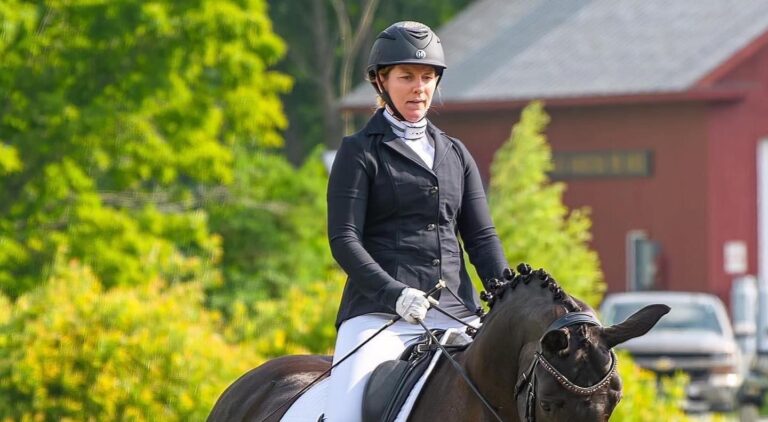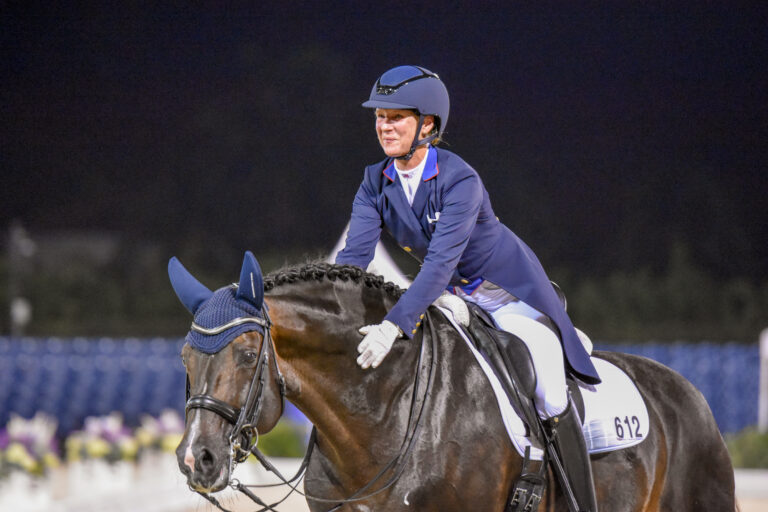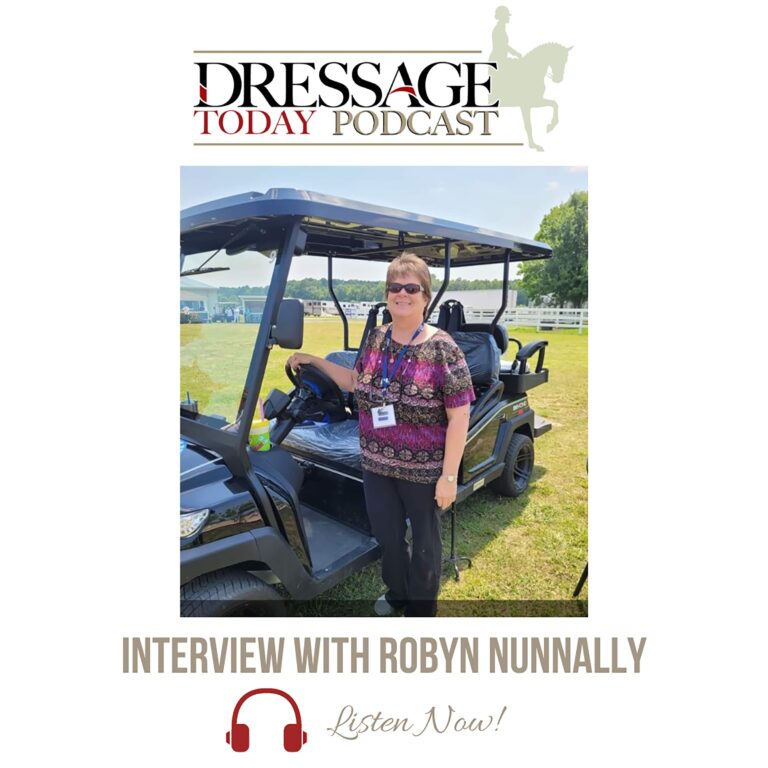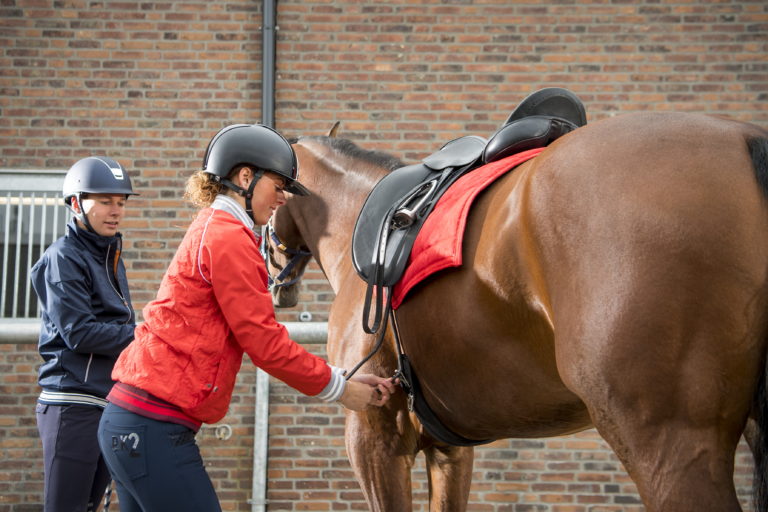Second Level puts demands on the horse that he hasn’t experienced before. Collected and medium paces ask for more engagement and thrust from his haunches, as well as development of the topline muscles over his neck, back, loins and croup. Lateral movements, shoulder-in, travers and renvers demand increased flexibility of the horse’s body, as well as the ability to cross both his fore and hind legs over in front of one another. Because of these added demands, the use of stretching exercises in the warm-up and warm-down phases of the daily schooling sessions become more important.
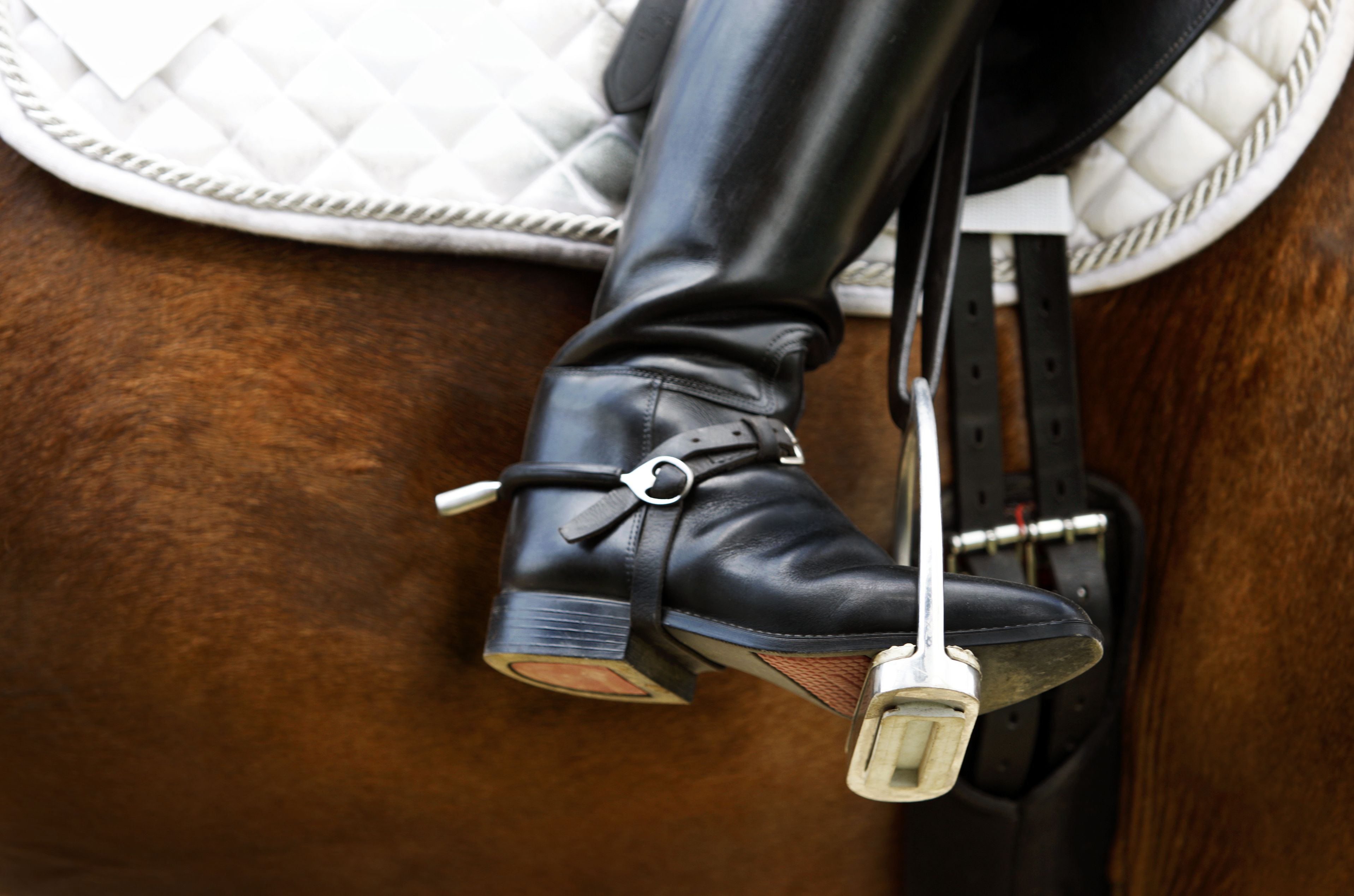
My schooling sessions for Second Level and up have six phases:
(1) Walk,
(2) Stretching trot and canter,
(3) Suppleness (developing collected paces),
(4) Schooling (reviewing learned movements and schooling new ones),
(5) Warm-down (similar to the second phase, but not as long) and
(6) Walk (if possible out of the arena).
Phase 1. I first like to warm-up my horse at the free walk. When I feel that my work is relaxed after a few minutes at the free walk I like to ask for a connection, developing a medium walk while making sure that the strides of the walk remain fairly long and energetic. While in the medium walk I like to ask for few meters of shoulder-in, making sure that I keep the quality of the medium walk by moving the horse forward into the contact during the shoulder-in. I also like to perform a few strides of travers if I feel that my horse is able to maintain the longitudinal connection by marching into the contact with the bit while he bends around my inside leg and crosses his outside legs over his inside legs.
Phase 2. After ten or so minutes, depending on how long it takes for my horse to loosen and relax, I begin warming up at the trot. Large circles and changes of rein are good warm-up patterns. I think of the dressage arena as an oval rather than a rectangle when warming up young or green horses. Corners are a lot to ask early in the schooling session. The goal of warm-up is to have my horse stretch down and out with his neck while he fills out my outside rein as a result of his bending around my inside leg. The horse should become softer in his contact with the inside rein. An energetic but not quick tempo of the trot is ideal.
When the horse establishes the correct connection in one direction, I change rein and work on the horse filling out the outside rein in the other direction. Most of this bending, stretching warm-up is best practiced on the 20-meter circle.
When my horse becomes rhythmic and supple in both directions at the trot I ask for canter. In canter most horses carry themselves more uphill and don’t need to be stretched as far down as in trot to get the stretching over their topline (too deep of a stretch might put the horse on the forehand in the canter, since only horses with a good canter carry themselves uphill). It’s important that he continues to fill out my outside rein to prevent him from falling on his inside shoulder and therefore on his forehand. When I feel the horse is using his back well and bending and stretching both longitudinally and laterally it’s beneficial to practice transitions back and forth from trot to canter and back to trot again.
Tense horses often take more time to get them to relax and stretch their muscles. One of my FEI level horses, on some days, takes at least 20 minutes to relax enough so that he can stretch down and bend around my inside leg filling out my outside rein. When I finally feel him relax, stretching and bending on the circle, I alternate trot and canter transitions on the circle. After cantering, this horse will often tense up again, hurrying his rhythm and tightening his body, so bending is difficult to achieve. I take the time to reestablish the rhythm, relaxation, stretching and bending. When this horse truly relaxes and supples his body, his gaits become long, springy and high off the ground. During the schooling session if I feel this horse tighten his back, I use the supple, stretching circle to again loosen his tight back muscles.
Phase 3. Being supple becomes important at Second Level with the introduction of collected paces. It takes time to develop the uphill balance of collection from the working paces at the second phase. Collected gaits need to be developed before I can begin to school the lateral movements required in Second Level as well as medium gaits. Half halts are the key to developing collected gaits. I often alternate some short lengthening of stride at either trot or canter, depending on how my horse reacts, with half halts to develop the collected gaits. I try to use the half halts to engage my horses without making his strides too much shorter than in the light lengthening he is performing. As a result of the half halts the horse will elevate his shoulders, lighten and free his forehand, as well as elevate his shoulders. If my horse doesn’t respond to the half halts, I may ask for a full halt. From the full halt, I ask for an immediate forward response from my leg and seat aids to go forward. If the horse doesn’t immediately respond, I give a sharp push with my leg and if necessary, a light tap just behind my leg with the whip. As soon as the horse responds, I immediately lighten my driving aids as a reward. I always remind myself that only the reward (in this case, the lightening of the driving aids) trains the horse. Punishment (discomfort) only tells him what not to do. Reward (more comfort) tells him what I want him to do.
At least three strides of the transition are needed for a young or green horse to go from halt to trot. Hopping steps can result if I ask an undeveloped horse to immediately trot with big strides from the halt. It is fine to allow an undeveloped horse to take a few shorter strides, although the full trot should be achieved by the third or fourth stride from the halt with a Second Level horse.
Phase 4. Before I go into the schooling phase, I need to make sure I have developed the impulsion and uphill balance that results in collected gaits in both trot and canter. Now, in collected gaits, my horse will be able to successfully perform the lateral movements, difficult transitions, as well as balancing movements (counter canter) required in Second Level.
Phase 5. After I have completed my schooling session, which I always try to end with a successfully performed easier exercise, I again warm my horse down. This phase is important because it again supples and stretches out my horse’s topline muscles.
Phase 6. When I feel my horse relaxed and nicely filling out my outside rein, its time for a nice hack outside on a long rein. Then back to the barn and carrots!
Hilda Gurney is an FEI “I” dressage judge and two-time Olympian. She won a bronze medal in 1976 riding her Thoroughbred, Keen, and was inducted into the U.S. Dressage Federation Hall of Fame in 2007. A respected judge and clinician, she breeds horses, trains and teaches in Moorpark, California.


